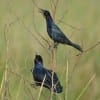
By Jim Stevenson
If there are any more people who might help Saturday morning with the Tallow Tree eradication, you will be my new best friend. We are meeting here at 8 am, with sturdy footwear, long pants, gloves and cutting tools if you have them and bug spray (if there are any skeeters).
I would like to open up my house for a Thanksgiving meal to anyone who has no place to go, or just wants to be here. I’ll have smoked turkey with a wicked Coleman’s mustard, squash/onion/cabbage, and that’s all Dr. Atkin’s will let me eat. You may bring whatever. Lemme know… Mi casa; su casa.
If there is ANYONE interested in the Costa Rica trip 3-14 February, now is the time to speak up!
I am going to change our field trip format just a bit, offering a monthly trip to a special place, like the prairie-chicken refuge, Junes State Forest, the Big Thicket, etc. We’ll see how that goes. Your thoughts?
Re: My new book on Galveston Birds- How many of you might want it on a disk so you could download it onto your computer? I welcome anyone’s wisdom on this matter.
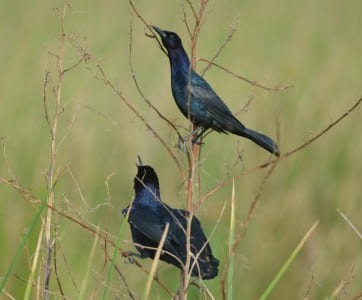
We get so used to seeing Great-tailed Grackles that it’s easy to pass up boat-tails. Plus, when the males stick their bills up in the air, their head shape looks more great-tail. But notice the brown eyes, a sure sign of boat-tails here in the Gulf States. The lower bird, BTW, has the typical rounded head of the boat-tail.
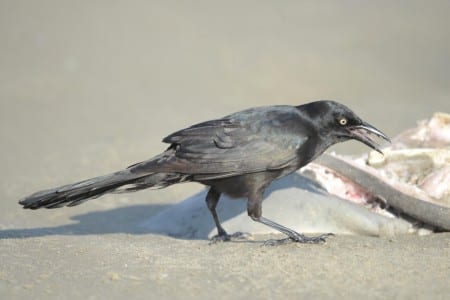
It’s very easy to see the white eyes on this Great-tailed Grackle, p lus the flat head. He really thinks he’s cool, eating a shark. You can see how his tail is growing out, as grackles have a very unattractive, full-tail molt in early fall. As for the shark, marine biologists are very concerned about vastly reduced populations, and this creature was just tossed up on the beach to die and rot.
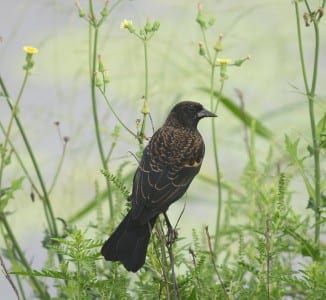
Fall migration male red-wings are tinged with brown and look more female than male (no word on whether they stop and ask for directions while finding their way). To achieve the breeding black plumage, the simple act of the feather tips wearing off allows the male to become the sleek, black bird we see in winter and spring. It’s a pretty cheap way to molt!
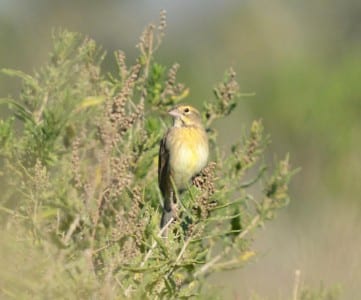
Dickcissels migrate through in October and this lone bird seems lost in a sea of open bushes. This plumage always reminds me of a female House Sparrow that got spray painted with yellow. Anyone visiting the Llanos in Venezuela in March can be treated to millions of these darkening the sky, getting ready to pass through Texas to breed.
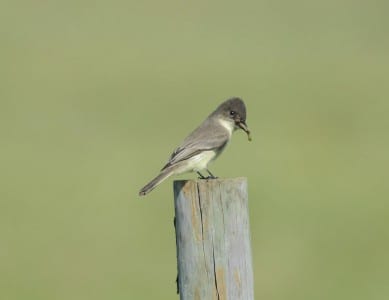
Eastern Phoebes are arriving when all the other typical flycatchers are leaving the Continent. That makes them our only Continental migrant flycatcher (winter resident). Note the large, dark head and a hint of a crest. Unseen is the tail bobbing, just about our only non-warbler to do so. Not sure what the larval insect is in the beak, but it’s toast.
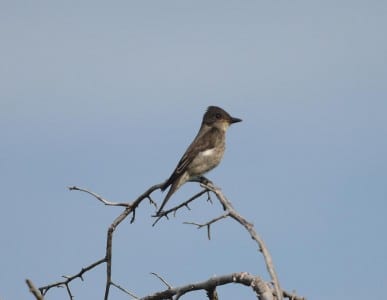
Olive-sided Flycatchers are very early fall migrants, and this individual on the 17th of October was truly exceptional. It was at the State Park on the Island’s West End, which occasionally has its good finds. Mort had a Vermilion Flycatcher there earlier. Note the white spot on the flanks, found on adults. Otherwise, it’s a hefty pewee on steroids that loves the tops of trees.
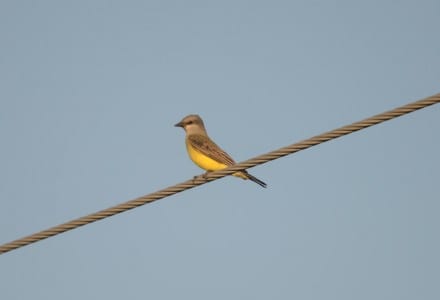
This is a Western Kingbird, but shows how birds can be misidentified. From this picture, the best I could do, you can’t see any white outer tail feathers, the chest (incorrectly) looks yellowish, the bill looks very short and the back looks more olive than gray. It looks for the World like a Couch’s, maybe, but isn’t. Some groups of birds are tough complexes, and about half of them are flycatchers!
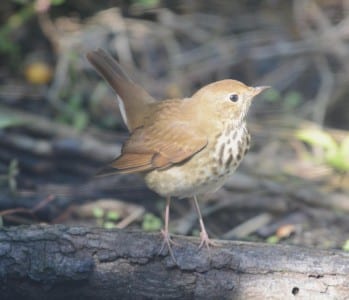
Hermit Thrushes are kinda like Eastern Phoebes, they stay for the winter when the other typical thrushes (except robins and bluebirds) leave. They have a habit of holding their tail up and lowering it, and the reddish color is diagnostic. They prefer forests with lots of goodies on the ground. They usually winter in Laffite’s Cove.
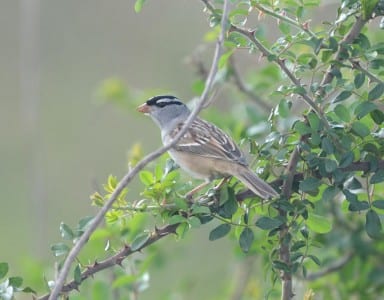
White-crowned Sparrows aren’t common in the area but pass through in late October. They are easily found in winter at Prairie-chicken NWR near Eagle Lake. Note the lack of a white throat, telling you it’s not the White-throated Sparrow of our wintertime forests. Also, only a few sparrows have pink bills.
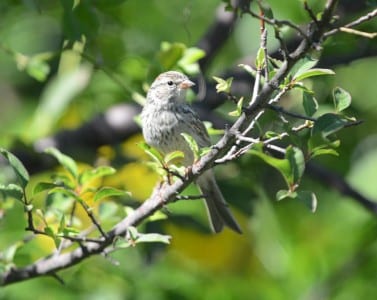
This bird would stump many people! It’s a juvenile Chipping Sparrow, which is rarely seen this far south in this plumage. Sure made me do a double-take. You can actually see the reddish cap coming in, although it won’t get very red until early spring. Chippies are strangely scarce on the UTC, a little bit like Song Sparrows
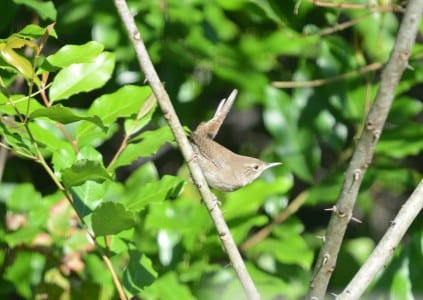
A species that fluctuates wildly from one winter to the next, I am hoping this bird sticks around this winter. Notice the cocked tail of so many wrens, and the grayish plumage of a bird that lives outside of the thick woods. This bird is on my Hercules Club, one of the best trees for attracting birds. Unfortunately, they grow slow and you have to dig them up to transplant. And buddy, those thorns are very professional.
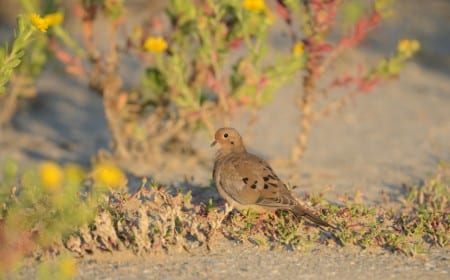
Mourning Doves are usually a streak in the sky (especially now, in dove season), and are your basic brown, but against a nice background, they aren’t bad looking. The breed in low numbers on the Island (and these parts) but in fall, when the seeds are dropping, they show up in huge numbers. And the shots ring out from sunup to after sundown.
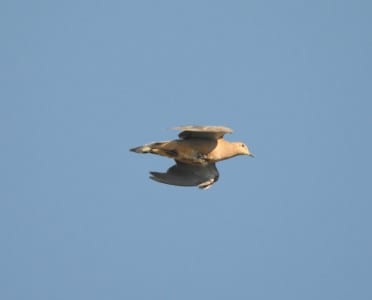
Here is a Mourning Dove whizzing by as (I swear) I am driving down the road. Pretty sharp camera, eh? What caught my eye was the ripped up feathers below and on the tail. Game birds not only taste good to us, they taste especially good to predators. They are animals we call K-strategists; they survive by making lotsa babies coz they get killed a lot. That’s why resurrecting the prairie-chickens is such a daunting task: The population is way too low to sustain such casualties.
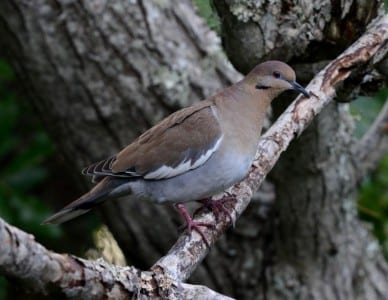
White-winged Doves were absent in Galveston until the early 1990s, but are now abundant. They have a curious June/late fall migration, the latest spring migration of any bird. In South America, there is a very similar species, and this is not unusual. There are several pairs of bird species which have diverged just enough to be called different species.
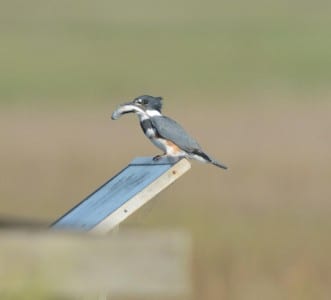
Not a great shot, but as any bird photographer knows, Belted Kingfishers are very wary. This one has speared a mullet, and these fingerlings are one of the best fishing baits you can use (but you better be prepared for the fish that takes it!). This ‘fisher is a female, as she has a reddish “belt” across the belly.
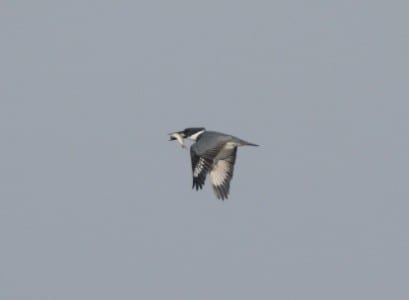
Here’s a way-off shot of the kingfisher in the air.
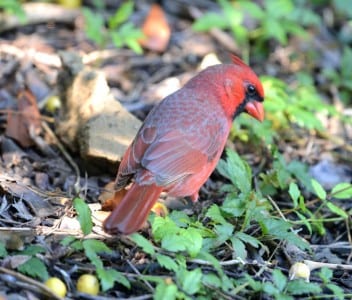
Cardinals, despite their colors, are taken for granted by many, but I only have one pair here at a time, and they are special. The male is very tame and hardly notices me. I firmly believe many people get started birding from these types of encounters with backyard birds, and I can easily confess to very warm feeling toward my pair of cardinals. I even named them after my parents!
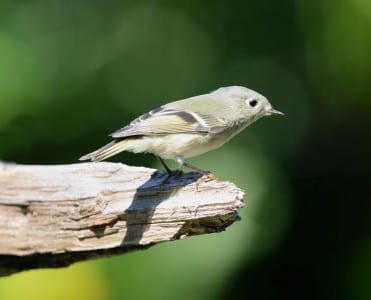
Ruby-crowned Kinglets arrive for winter mostly in October and their incessant chatter is nearly nerve-wracking at times. They are best recognized by their bold, white eyering and tiny size, flitting around constantly. Be wary of Hutton’s and Bell’s Vireo, as either has been confused with these nervous little agitators.
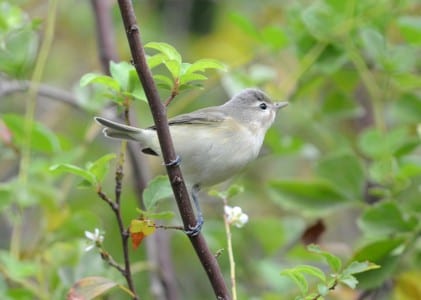
One of our truly drab birds is the Warbling Vireo, your basic dull gray all over. They nest further south than the sharper Philadelphia, and are therefore ear lier migrants. Phillies have more yellow under the tail and a darker eyestripe but many birders have fallen victim to the evils of that pair. Use 10/1 and 4/20 as the dividing line when Warbling disappears and Philly increases.
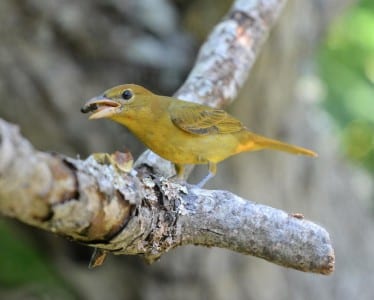
Tanagers are said to be big fruit eaters, but they do have a non-sweet tooth for nasty bugs like bees and ants. This one is crunching the chitinous exoskeleton of a sweat bee, before gulping it down whole. They are very good at bashing wasps and hornets on limbs so as not to get stung. Oh, this is a female Summer Tanager. Note the brownish-yellow color, as opposed to the greenish-yellow of the female Scarlet.
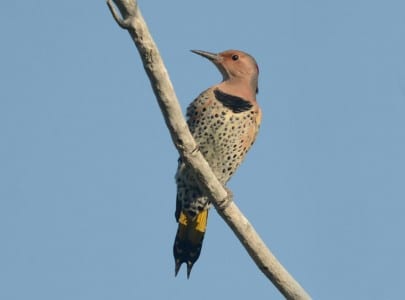
October is THE month for Northern Flickers, and this one is showing you his race – the eastern one we call “yellow-shafted.” Flickers are unique woodpeckers; they even feed on ants off the ground at times. They love my Chinaberries, but not much else does. Some years they will roost under my sky deck, right above my bedroom windows. This one’s a female, as it has no black mustache.
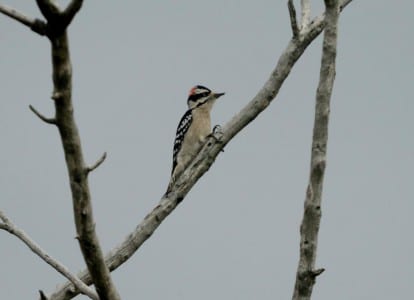
Wee have an odd collection of small woodpeckers in Laffite’s Cove on Galveston, with a Downy, an out-of-range Ladder-backed and a hybrid between the two. This is likely the male Downy, sexed by the red spot on the head. Note how tiny the bill is, half as long as a Hairy (which will never occur on Galveston).
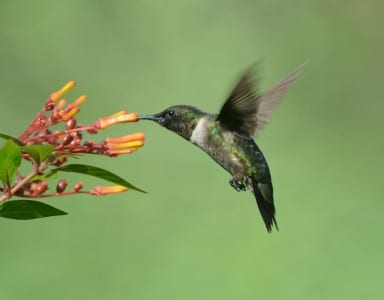
Here is a male Ruby-throated Hummingbird feeding just outside my window. Note how it’s hard to see the color when not looking straight on, at reflected color. These birds have tongues which cause the nectar to flow up their bill with no energy expended. This is the only regular hummer in the East, and any seen after October are very like another kind.
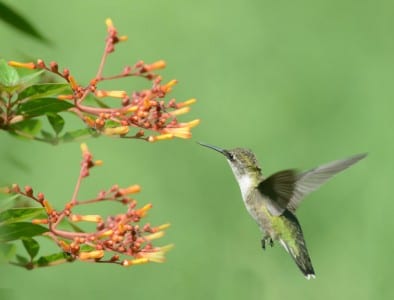
And on the other side of the bush, a female. These are told from Black-chinned by being greener on top, having a shorter bill and they don’t pump their tails as much as BC. Note how small the feet are on a bird that spends most of its time on the wing. Otherwise, there is just too much energy expended.
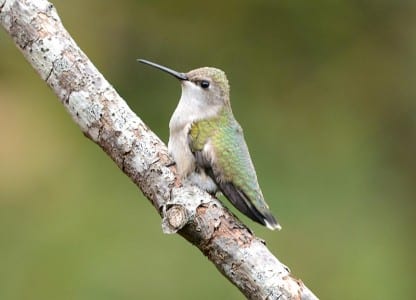
They do rest, though, and this one got tired of the abuse from that other female pictured. See how the bill is also quite straight, not slightly decurved like a BC. The head is also a tad gray, but within acceptable parameters for RT. Hummers have too take periodic rests, given their sugar diet and constant hovering.

 Posted in
Posted in 
























will birds on the coast come to seed feeders?